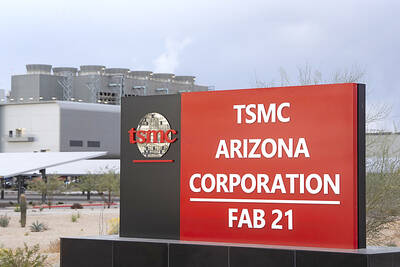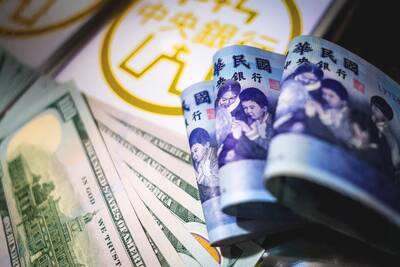The effect of the 15-member Regional Comprehensive Economic Partnership (RCEP) trade agreement on nonmember Taiwan could be limited, said Roy Chun Lee (李淳), senior deputy CEO of the Taiwan WTO & RTA Center at the Chung-Hua Institution for Economic Research (中華經濟研究院).
The RCEP is a free-trade agreement that was signed by the 10 ASEAN member states, as well as Australia, China, India, Japan, New Zealand and South Korea, on Nov. 15, 2020. It is the largest trade bloc in the world.
The deal took effect in Australia, Brunei, Cambodia, China, Japan, Laos, New Zealand, Thailand, Singapore and Vietnam on Saturday, and is scheduled to take effect in South Korea on Feb. 1.

Photo: CNA
Indonesia, Malaysia, Myanmar and the Philippines have not yet ratified the deal, but Jakarta is expected to do so early this year.
The agreement covers a population of more than 2.2 billion and 30 percent of global GDP.
The RCEP aims to reduce or eliminate customs duties imposed by each member state on originating goods by about 92 percent over 20 years.
As Taiwan already has tariff-free status for 70 percent of its exports to RCEP member nations, the impact on Taiwanese exporters would likely be limited, Lee said.
The Chinese Ministry of Commerce said in a statement on Saturday that Beijing would fulfill its commitments to the RCEP and aims to build the free-trade bloc into a major platform for economic and trade cooperation in East Asia.
Lee said that many Taiwanese exporters have relocated their investments in the Southeast Asian market, which is expected to help Taiwan reduce the impact of its exclusion from the RCEP.
Citing the flat panel industry as an example, Lee said it is expected to take about 10 years for the agreement to reduce tariffs among member countries, and over that period, the industry would continue to progress and diversify, resulting in negligible difficulties for Taiwan.
The government would continue to provide assistance to the machinery, petrochemical, steel and textile industries to help support digital transformation and improve their competitive edge in the face of the RCEP, a Ministry of Economic Affairs (MOEA) report said.
However, the MOEA has also said that Taiwan’s industries are unlikely to feel any short-term material effects as a result of the trade agreement.
As ties between Taiwan and China are at a standstill, it is unlikely Taiwan would join the RCEP anytime soon, Lee said, adding that Taiwan should set its sights on joining the Comprehensive and Progressive Agreement for Trans-Pacific Partnership (CPTPP).
Taiwan applied to join the CPTPP just days after China submitted its application on Sept. 16.
Outside of China and Taiwan, Lee said that South Korea and Ecuador have sought CPTPP membership.
Colombia and Thailand could file their applications later this year, he added.
Taiwan is expected to have a better chance of joining the trade bloc as the existing members do not have to choose between Taipei and Beijing, Lee said.
Opposition toward China has also been escalating worldwide, resulting in an increasing number of countries pursuing friendly ties with Taiwan, something that could improve Taiwan’s chances of joining the CPTPP, he said.
The CPTPP free-trade deal was signed in March 2018 by Australia, Brunei, Canada, Chile, Japan, Malaysia, Mexico, New Zealand, Peru, Singapore and Vietnam, and went into effect at the end of that year, after it was ratified by more than half of the 11 signatories.

Taiwan Semiconductor Manufacturing Co (TSMC, 台積電), the world’s biggest contract chipmaker, booked its first-ever profit from its Arizona subsidiary in the first half of this year, four years after operations began, a company financial statement showed. Wholly owned by TSMC, the Arizona unit contributed NT$4.52 billion (US$150.1 million) in net profit, compared with a loss of NT$4.34 billion a year earlier, the statement showed. The company attributed the turnaround to strong market demand and high factory utilization. The Arizona unit counts Apple Inc, Nvidia Corp and Advanced Micro Devices Inc among its major customers. The firm’s first fab in Arizona began high-volume production

VOTE OF CONFIDENCE: The Japanese company is adding Intel to an investment portfolio that includes artificial intelligence linchpins Nvidia Corp and TSMC Softbank Group Corp agreed to buy US$2 billion of Intel Corp stock, a surprise deal to shore up a struggling US name while boosting its own chip ambitions. The Japanese company, which is adding Intel to an investment portfolio that includes artificial intelligence (AI) linchpins Nvidia Corp and Taiwan Semiconductor Manufacturing Co (TSMC, 台積電), is to pay US$23 a share — a small discount to Intel’s last close. Shares of the US chipmaker, which would issue new stock to Softbank, surged more than 5 percent in after-hours trading. Softbank’s stock fell as much as 5.4 percent on Tuesday in Tokyo, its

COLLABORATION: Softbank would supply manufacturing gear to the factory, and a joint venture would make AI data center equipment, Young Liu said Hon Hai Precision Industry Co (鴻海精密) would operate a US factory owned by Softbank Group Corp, setting up what is in the running to be the first manufacturing site in the Japanese company’s US$500 billion Stargate venture with OpenAI and Oracle Corp. Softbank is acquiring Hon Hai’s electric-vehicle plant in Ohio, but the Taiwanese company would continue to run the complex after turning it into an artificial intelligence (AI) server production plant, Hon Hai chairman Young Liu (劉揚偉) said yesterday. Softbank would supply manufacturing gear to the factory, and a joint venture between the two companies would make AI data

DOLLAR SIGNS: The central bank rejected claims that the NT dollar had appreciated 10 percentage points more than the yen or the won against the greenback The New Taiwan dollar yesterday fell for a sixth day to its weakest level in three months, driven by equity-related outflows and reactions to an economics official’s exchange rate remarks. The NT dollar slid NT$0.197, or 0.65 percent, to close at NT$30.505 per US dollar, central bank data showed. The local currency has depreciated 1.97 percent so far this month, ranking as the weakest performer among Asian currencies. Dealers attributed the retreat to foreign investors wiring capital gains and dividends abroad after taking profit in local shares. They also pointed to reports that Washington might consider taking equity stakes in chipmakers, including Taiwan Semiconductor